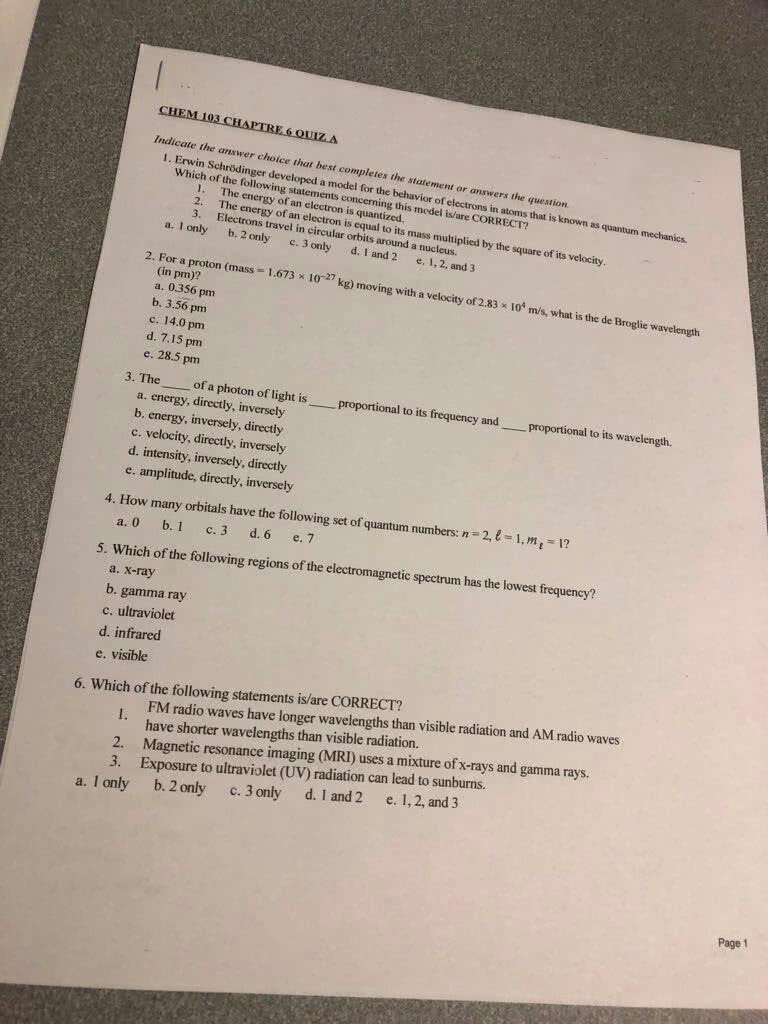CHEM 1040 Study Guide - Midterm Guide: Ionic Radius, Noble Gas, Solar System

CH 7
1. General properties of waves-electromagnetic spectrum!
a. frequency vs wavelength (with calculations using c = υ × λ
• M→ NM
o 1m= 10^9nm
o 10^-9 nm= 1 m
• Constants
o Planck’s= 6.626x10^-34 J/sec
o Speed of Light=3.00x10^8 m/s
b. general trends in the electromagnetic spectrum
• Wavelength
o Long (big) to short(small) (L→ R)
• Frequency
o Small to large (L→R)
• Radio, infrared, visible light, ultraviolet, x rays, gamma rays
• High amplitude- bright
• Low amplitude- dimmer
• Waves bend around edges (diffraction, refraction) think pebble in
water
2. Quantum Theory Background
a. What does quantized mean?
• Energy is quantized; occurs in fixed quantities rather than being
continuous
b. What did blackbody radiation show?
• Max Planck; energy only emitted in multiples of a minimum
amount= quantized
• Energy is quantized; only certain values allowed
b. What did the photoelectric effect show
find more resources at oneclass.com
find more resources at oneclass.com

• Electromagnetic radiation is made of a series of particles called
photons. Photon (light) hits an electron on metal surface, electron
can be emitted. Emitted electrons= photoelectrons. Energy
increases with light intensity
• Light has particulate behavior (photons)
- how to calculate energy of photon ( using E = hυ = hc/λ)
o Planck’s= 6.626x10^-34 J/sec
d. What does the line spectrum of hydrogen show?
• Only certain wavelengths observed in the emission spectrum of
excited atoms
• The wavelength of the photon is determining by the difference in
energy between the two states
• Energy of atoms is quantized; photon emitted when electron
changes orbit
- what does the Bohr model represent?
• Depicts atoms as small, + charged nucleus surrounded by electrons
that travel in circular orbits around nucleus (i. e. Solar system)
• Electrons move around the nucleus in circular orbits that can only
have certain radii
• Only certain stationary states (energy levels), each with the electron
in a fixed circular orbit around the nucleus. Atom radiates energy
only when the electron “jumps” to a lower-energy orbit (state).
- How to calculate change in energy transitioning from one energy
level to another
• Rydberg constant= 1.09677x10^-17 m^-1
e. Wave-particle duality
• All matter exhibits properties of both particles and waves.
• Electrons have wave like motion and therefore have only certain allowable
frequencies and energies
find more resources at oneclass.com
find more resources at oneclass.com

